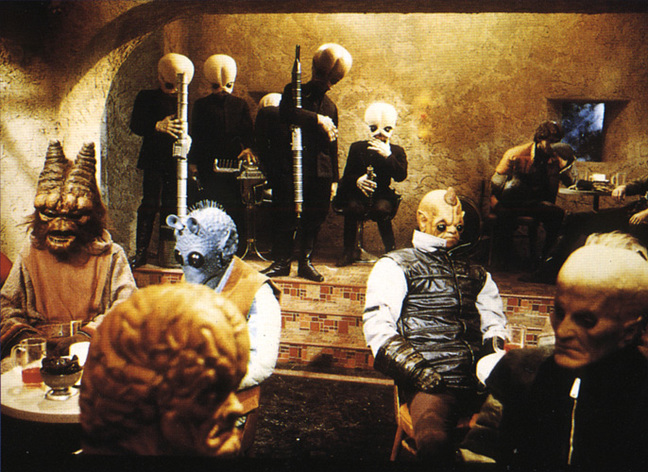Original URL: https://www.theregister.com/2015/04/30/microsoft_iconoclasm_risky/
Burger me! Microsoft's chainsaw rampage through sacred cow herd
Ballmer would turn in his grave. If he was dead
Posted in SaaS, 30th April 2015 14:30 GMT
Analysis Microsoft sent so many sacred cows to the abattoir yesterday that April 29th 2015 may well go down in corporate folklore as “Sacred Cow Day”. Or will it be “Mad Cow Day”?
[I see what you did there - ed.]
Such is Microsoft’s anxiety to get developers writing for its trailing-in-the-distance mobile platforms, it did an unthinkable thing. Six times before breakfast. And several times again between breakfast and “brunch”. And then it carried on. What made it all quite surreal was that the first hour contained no indication of what was to come.
CEO Satya Nadella paddled about with a music app for Surface, like a supply teacher killing time politely. Then, after he ambled off, came lots of new Important Cloud stuff. Then the surprises started.
We got Android apps running on Windows. A Microsoft IDE running on Linux. .NET ported to Linux, too. Support for Objective C, the language that only Apple and NeXT has ever really used. Support for Google and Apple APIs - in fact, just carry on writing for Google and Apple. Wild, untamed Win32 binaries scaling the ramparts of the Microsoft Store. Phones turning into proper PCs when you plug them into a monitor and keyboard.
Somewhere underneath the stage you could imagine Steve Ballmer’s disembodied spirit howling in pain.
What might Steve be thinking?
“This new Nutella guy - has he forgotten that ‘Linux is communism’? Doesn’t he know you must preserve the Windows PC license margin at all costs? You can’t just allow people to plug a device in to replace desktop Windows, one with a license that Microsoft just gives away? I mean, even the phone’s Office sort of turns into a proper desktop Office. Madness!
“And worst of all, when I screamed ‘Developers! Developers! Developers!’ and did that funny dance, I didn’t mean any old developer. I meant Windows developers. MCPDs. Guys who had coded ActiveX, knew the bugs in the Mono compiler, and had generally stuck with Microsoft through thick and thin. Our guys. Not some random, granola-eating stoners.”
You can call it anxiety. You can call it desperation. But you can’t call it boring old Microsoft. Presenters Terry Myerson and Terry Belfiore (and someone who looks like he’s been locked in Joe Belfiore’s cellar, watching Joe Belfiore presentations) seemed positively liberated by the iconoclasm. I thought they were going to tell us the release date is “only when the Moon is in the Seventh House” and strip all their clothes off.
But it’s a big gamble. A really big gamble.
Icono-clasm!
Because the developers haven’t come to Microsoft, Microsoft has to go to where the developers are, which to Microsoft must look like the bar in Mos Eisley spaceport. Microsoft didn’t quite, as rumoured, allow Android .APK binaries to run on Windows. But Android developers will be able to send off their .APK to binaries which will … try and make sure they run on Windows. You could say that’s a difference without a distinction.

"Excuse me, guys? I’m from Microsoft. I'm told Android developers hang out here…”
The fight is really over whether Microsoft stays relevant, and it partially answers the awkward “Cloudobile” koan that Satya Nadella has been posing for over a year. As Myerson said, Microsoft wants this platform to number a billion devices. The answer is “volume”.
The downside is that if everybody produces Windows apps, but nobody is really writing to Microsoft APIs, then Microsoft hasn’t really answered the relevance question. Windows isn’t really adding any value of its own.
To keep Windows “relevant” there has to be just enough on the other side of the fence to be worth a graze. Perhaps it’s Azure, perhaps it’s Maps. It’s probably not Cortana. But something Microsoft flavoured to jam between the #ifdef and #endif statements in your Java or Objective C code.
If there’s nothing unique, then that makes Windows highly vulnerable because the other platforms don’t stand still. A Surface becomes a highly polished and expensive ChromeBook.
There are other downsides too.
If you lower the barrier to entry then a lot of dreck washes over the barrier. Look what happened when BlackBerry made publishing an app in the BlackBerry store really, really easy, to boost its headline app count? It was filled with crap. And remember Apple’s Hypercard? (Some people do, fondly.) Well, writing “apps” for Hypercard was so easy almost anyone could do it. And almost anyone did. Presumably the Store gatekeepers are going to be kept busy.
My reading of it goes like this. Microsoft may have realised that touting a “Universal App” in itself isn’t a huge attraction. The leading three platforms today are web, iOS and Android, and “writing once for Windows” doesn’t make Windows any more attractive overnight. Windows remains the fourth option - not just the fourth, fifth, sixth and seventh options - but still fourth. For proof, look at number of the high quality third party Metro/Modern apps that you’d actively choose to use, if the web version wasn’t available. The FT app is pretty nice … but I can’t think of that many more. If you want to use Amazon or eBay, or you’d be crazy to use the Metro/Modern app. You'd go straight to the website.
So it's apps at all costs. For now, the technology strategy is to make it ridiculously easy for developers to add Windows to their list of build targets, and the business strategy is “hang on in there”. As former Office and Windows Phone designer Jon Bell put it in his fascinating Reddit AMA:
“So when <insert disruptive technology here> blows up, Microsoft can say they kick ass at the cloud AND every endpoint your users might want. That’s huge.”
I’ve heard worse ideas, and it isn’t going to be boring. ®